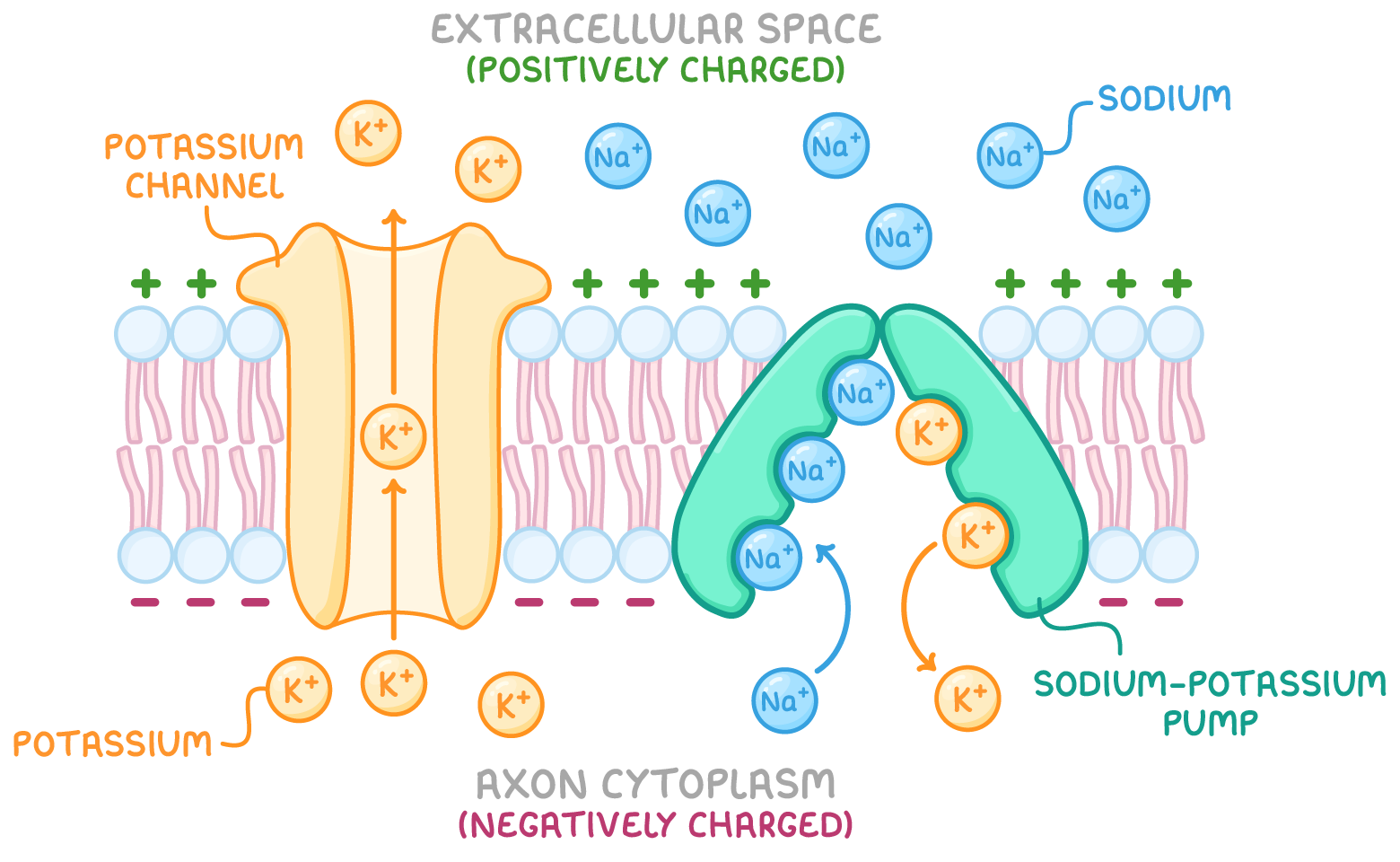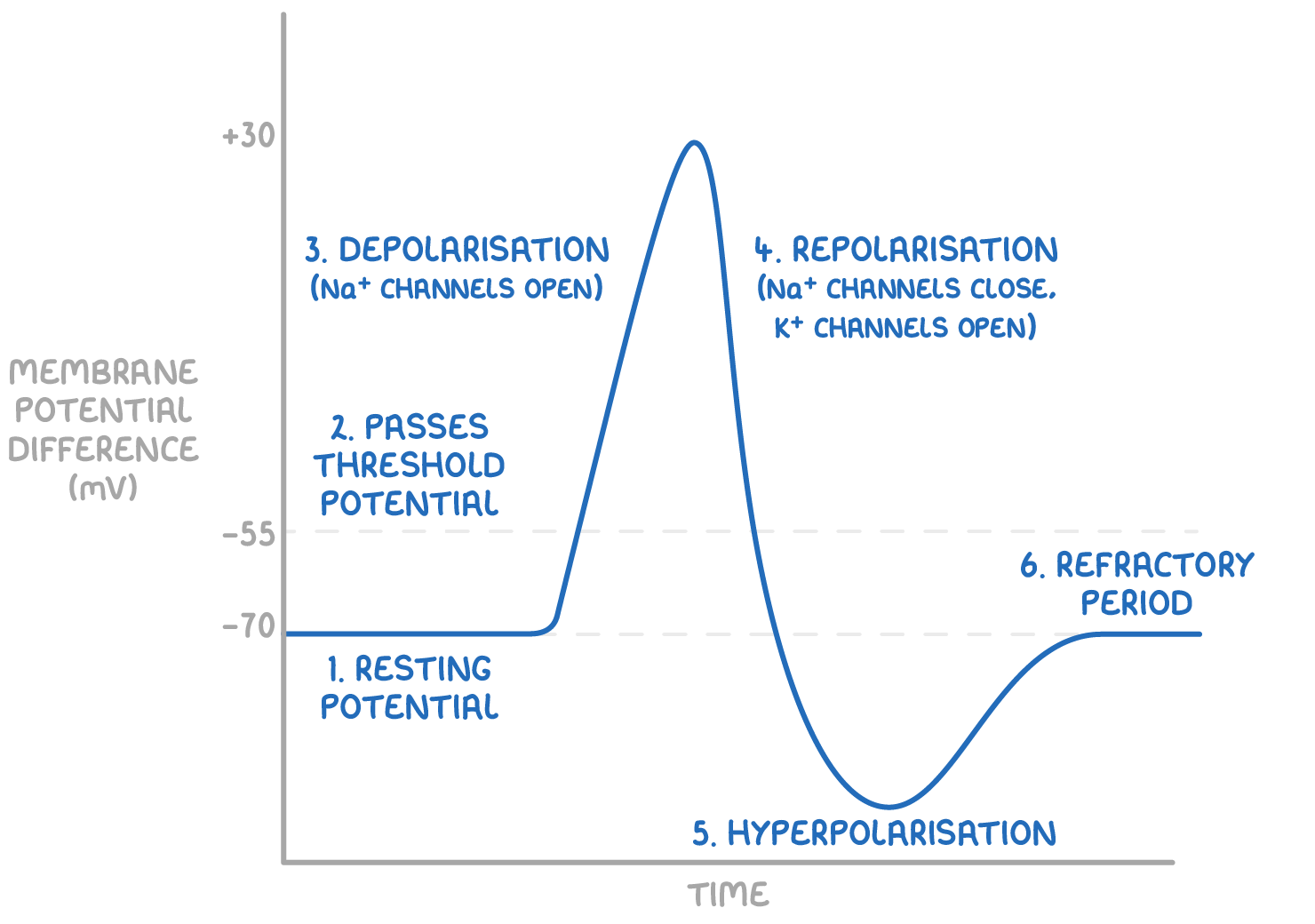The Nervous Impulse
This lesson covers:
- Setting up the resting potential
- Generation of an action potential
- The all-or-nothing principle
Setting up the resting potential
When a neurone is not transmitting signals, its cell-surface membrane maintains a state of polarisation. This means there's a difference in voltage across the membrane. This is the resting potential, and it is typically around -70 mV.

The resting potential is achieved using:
- Sodium-potassium pumps - These are active transporters that move three sodium ions (Na+) out of the neurone for every two potassium ions (K+) they move in.
- Potassium ion channels - These channels allow the diffusion of K+ out of the neurone, down its concentration gradient.
- Sodium ion channels - These channels are closed, preventing the movement of Na+ into the neurone.
As a result, the extracellular space outside the axon accumulates more positive ions, making the axon cytoplasm negatively charged in comparison and causing the membrane to be polarised.
Generation of an action potential
During an action potential, if the neurone receives a sufficiently strong stimulus, rapid changes in the membrane potential occur and the inside of the axon becomes positively charged.

This occurs in the following stages:
- Resting potential - The membrane is at rest and polarised at around -70 mV.
- Stimulus - Voltage-gated Na+ channels open, so more Na+ flows into the axon making the inside less negative.
- Depolarisation - If the threshold potential of around -55 mV is reached, more Na+ channels open causing an influx of Na+.
- Repolarisation - At around +30 mV, Na+ channels close and K+ channels open, so K+ flows out of the axon and the membrane starts repolarising.
- Hyperpolarisation - An excess of K+ leaves the axon, dropping the potential below the -70 mV resting level.
- Refractory period - Various ion pumps and channels work together to restore the membrane back to the resting potential.
The all-or-nothing principle
Reaching the threshold potential triggers an action potential that proceeds in a uniform, self-propagating fashion - it's an all-or-nothing response.
The all-or-nothing principle of action potentials is characterised by:
- The threshold phenomenon - Once the threshold potential is reached, an action potential is always triggered, regardless of the stimulus' strength.
- No partial response - Without reaching the threshold potential, no action potential is initiated.
- Action potentials are always the same size - A stronger stimulus doesn't increase the size of the action potential, but it does increase the frequency of action potentials generated.